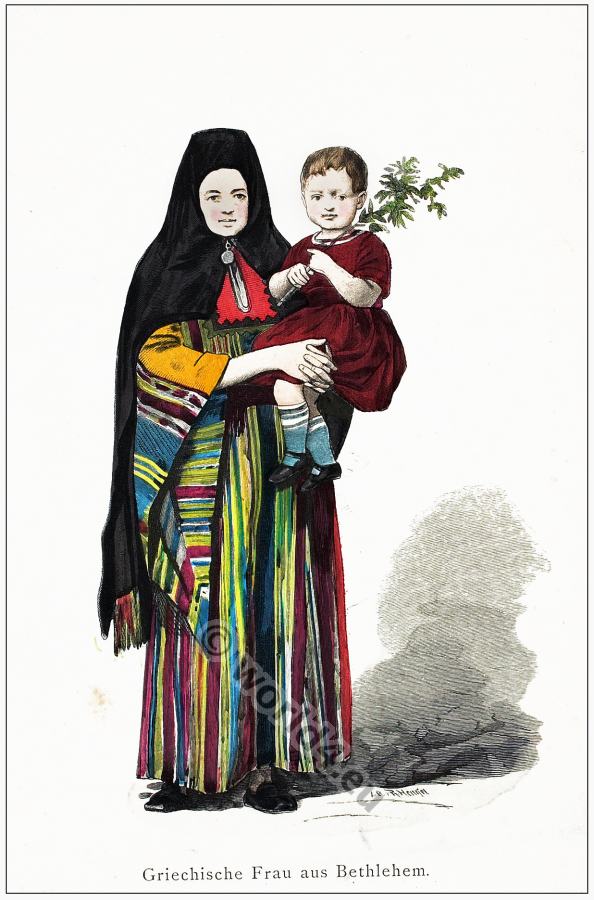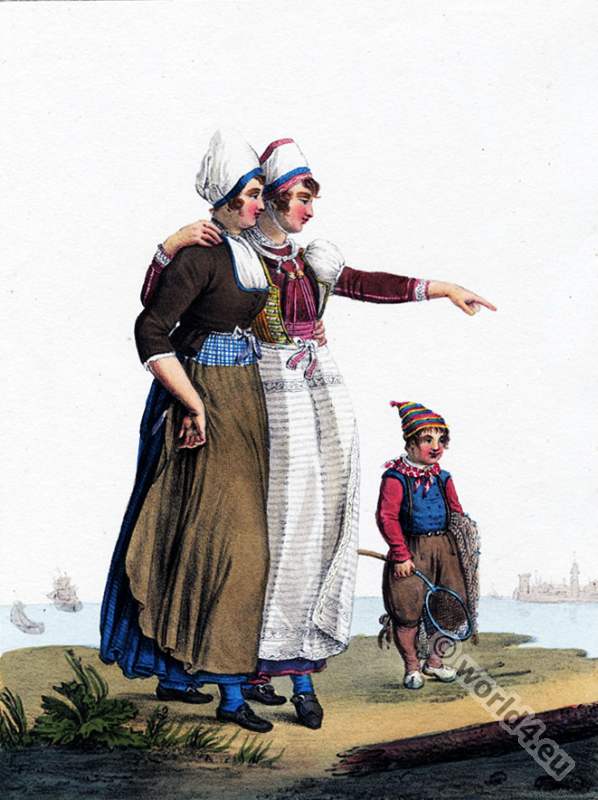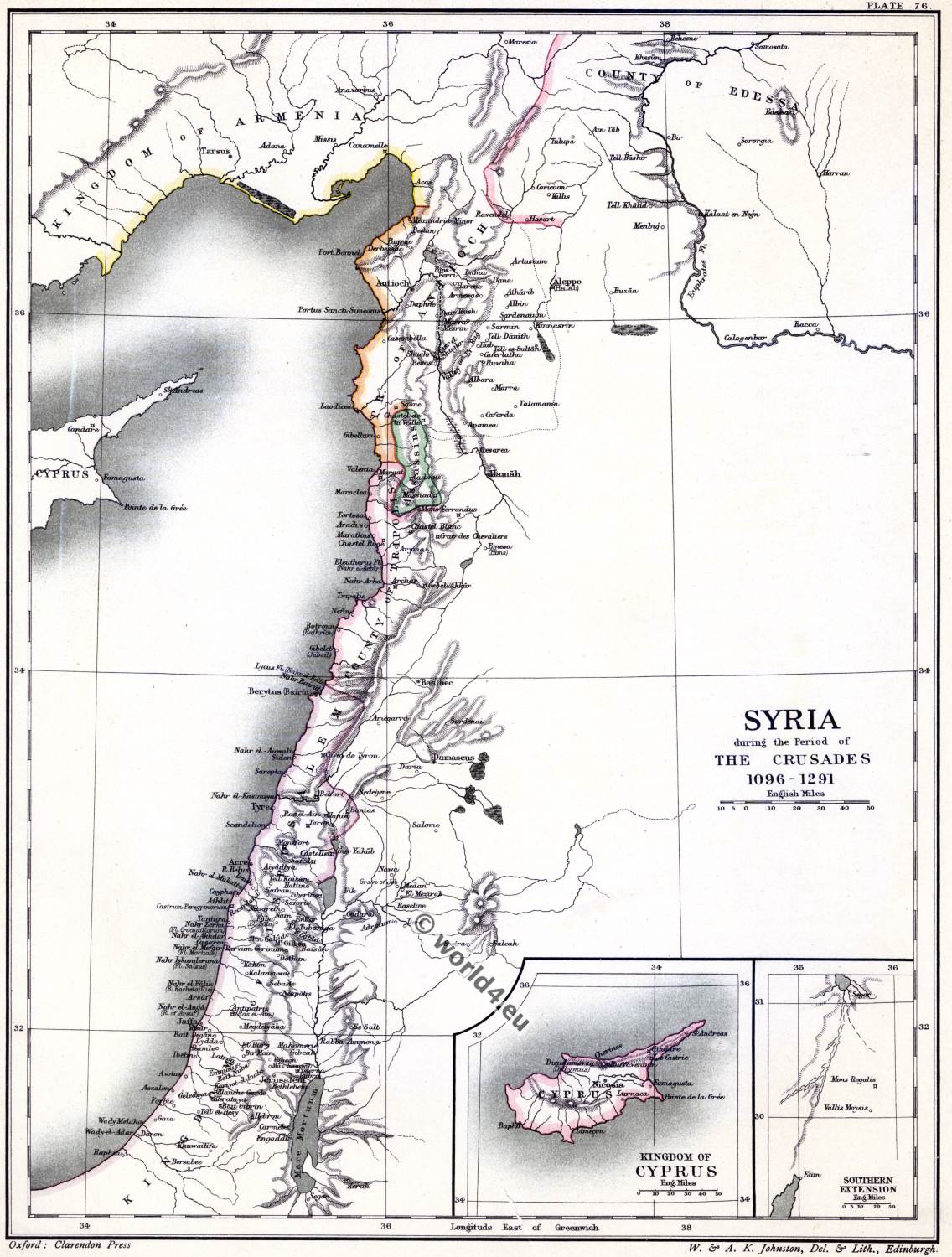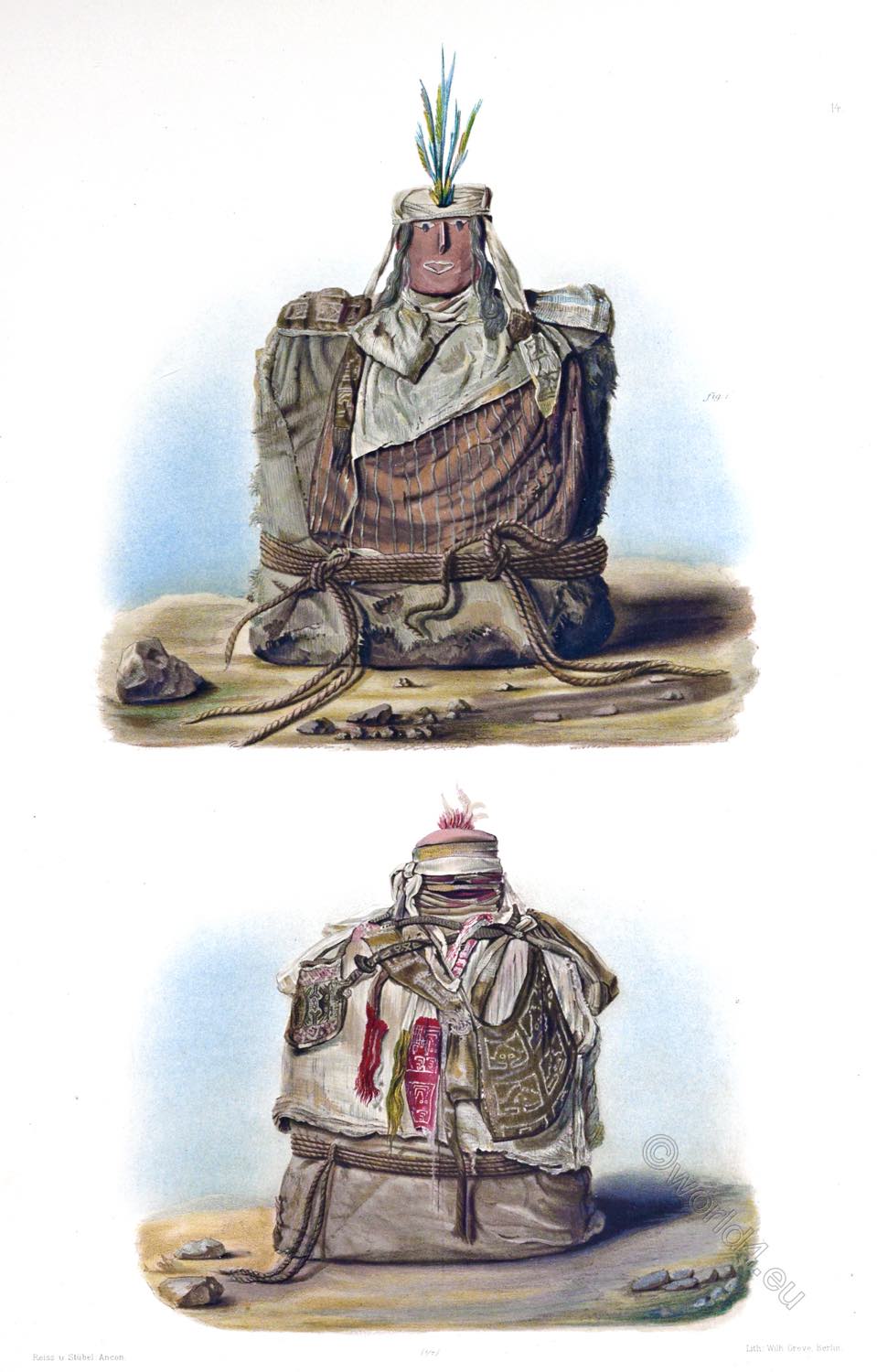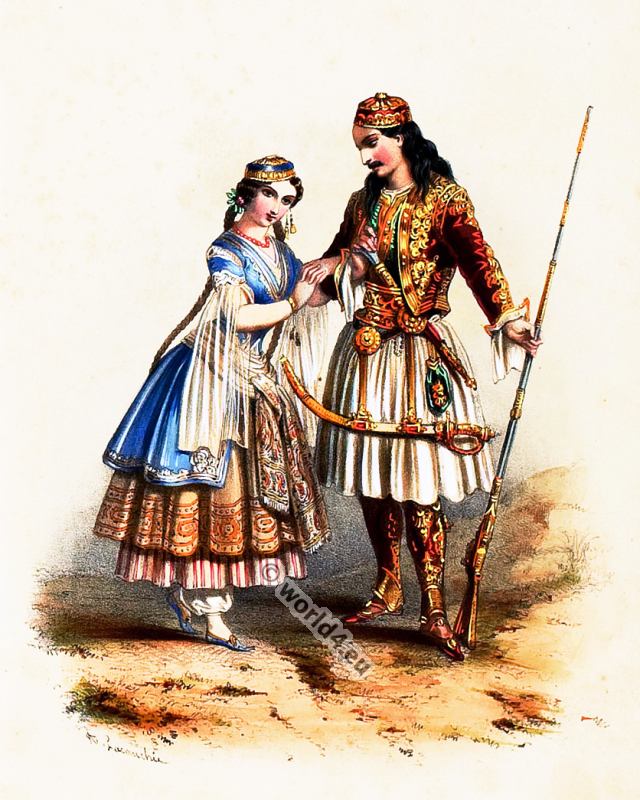Bethlehem is a city in the West Bank, part of the Palestinian Territories and bordering Jerusalem to the north. The city has great religious significance for Christians all over the world, as it is the biblical birthplace of Jesus of Nazareth, according to the Gospels of Luke and Matthew.
According to the Hebrew Bible, Bethlehem was built by Rehoboam as a fortified city, and it says that Bethlehem was the birthplace and coronation site of David, so the city also has religious significance for Jews.
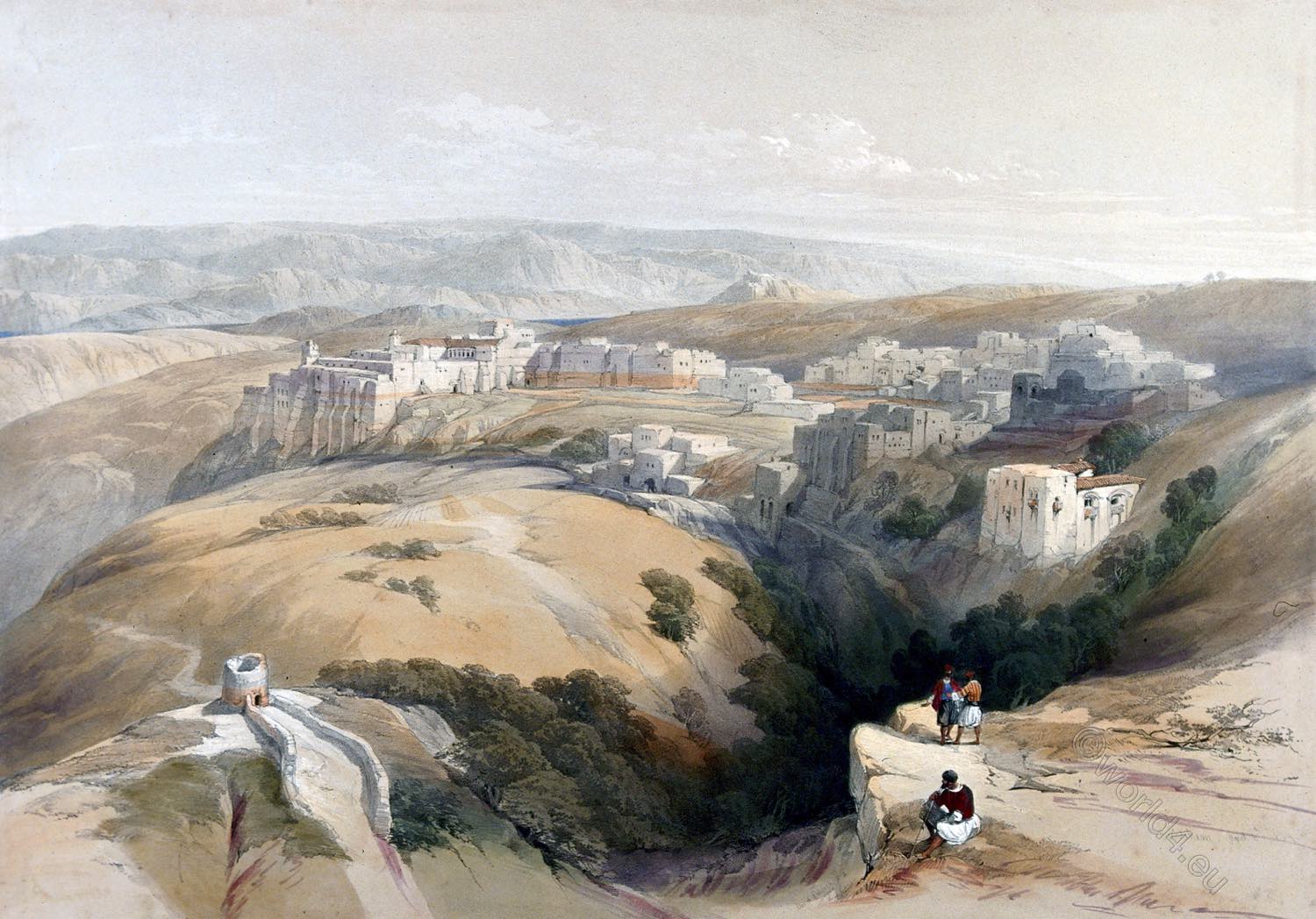
BETHLEHEM.
by David Roberts
In every age of Christianity Bethlehem has held a solemn place in the recollections of mankind. The history of which it witnessed the commencement can have no equal in its grandeur or in its purpose, for it extends to all the generations of the earth, and it proclaims mercy to all. The magnitude of the Gospel is so vast, that all human greatness disappears in its presence; its heights are sublime above all the imaginations of created beings; its depths are profound beyond all their penetration.
To have shared in the progress of this mighty minister of good, to have been visited by its visible presence, to have home the vestiges of its early wonders, gives a title to the noblest honors which can be demanded by memory, or paid by gratitude. The very caverns and forests which echoed the Divine voice; the hills and waters which witnessed its power over Nature; the very dust of the Divine feet—all are consecrated. We feel that God has been there, and we involuntarily deem that His presence has not altogether departed.
“Behold the days come, saith the Lord, that I will raise unto David a righteous Branch, and a King shall reign and prosper, and shall execute judgment and justice in the earth. In His days Judah shall be saved, and Israel shall dwell safely: and this is His name whereby He shall be called, The Lord our Righteousness.” 1)
The place of the Nativity was distinctly marked in prophecy. “But thou, Bethlehem Ephratah, though thou be little among the thousands of Judah, yet out of thee shall He come forth unto me, that is to be ruler in Israel; whose goings forth have been of old, from everlasting.” 2)

The costumes of the married women of Bethlehem are similar to certain of the Frankish modes during the Crusades. Their quaintness gives the town an additional charm.
Humanly speaking, nothing could be more improbable than that Bethlehem should be the birthplace of the Son of Mary: for the country of Joseph was in the northern province of Palestine, and it was also expressly prophesied that this northern province should be the chief scene of his existence, and even the very first which was to acknowledge his glory.
“The land of Zebulun and the land of Naphtali, by the way of the sea, beyond Jordan, in Galilee of the nations; the people that walked in darkness have seen a great light; they that dwell in the land of the shadow of death, upon them hath the light shined.” 3)
Yet the prophecy which assigned the place of Nativity was so distinct, as to fix the unanimous expectation of all the Jewish authorities on Bethlehem. When the Magi came to Jerusalem, perhaps conjecturing that the King was to be born in his own royal city, the “chief priests and scribes of the people,” being gathered together by order of Herod to determine the birth-place, “said unto him, In Bethlehem of Judaea, for thus it is written by the prophet.” 4)
And in Bethlehem he was sought, and found.
The village lies about two hours distance from Jerusalem, on the east and north-east slope of a long ridge; a deep valley, Wady Taamirah, being on the south side, which passes to the Dead Sea. The surrounding country, though hilly, is fertile and well cultivated.
In the distance are seen the hills of Moab, and below them is a glimpse of the Dead Sea. 5)
In the interval between the Greek Convent and the mountain border of the Dead Sea rises a hill, named the Hill of the Franks, from a legend of the Crusades. The ruins on its slope are Roman, and conjectured to be those of a palace and fortress of Herod the Great. 6)
1) Jerem. xxiii. 5, 6. 2) Micah, v. 2. 3) Isaiah, ix. 1, 2. Matt. iv. 16. 4) Matt. ii. 4, 5. 5) Roberts’s Journal. 6) Biblical Researches, ii. 173.
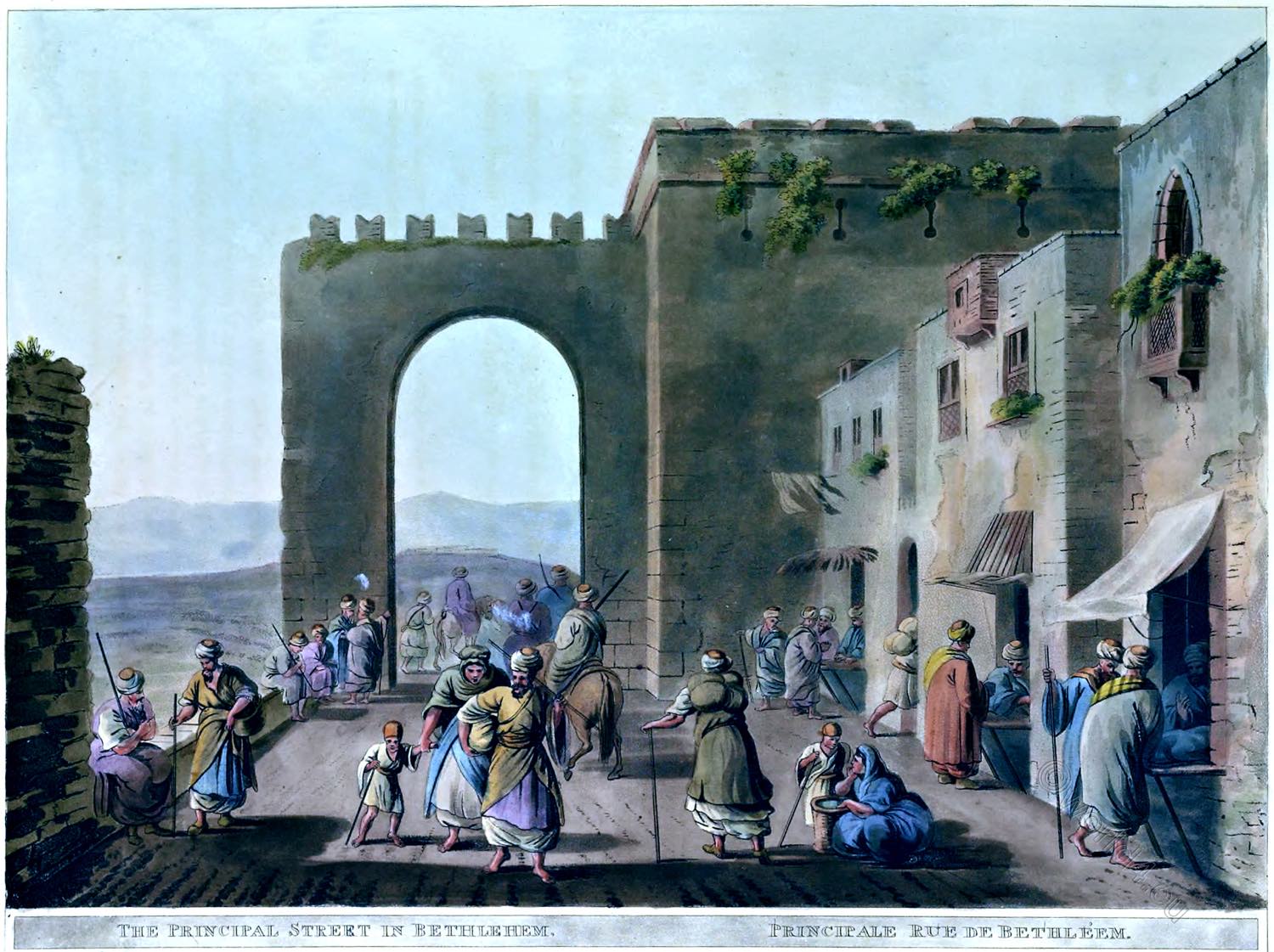
BETHLEHEM.
by Luigi Mayer
The city of Bethlehem, built on a lofty hill, the soil of which abounds in chalk and marl, appears to be very healthy, as might be presumed from these circumstances. The sides and summit of the hill are interspersed with fine vineyards, banked with stones; and the grapes they produce are remarkably large and finely flavored. Figs, pomegranates, and an abundance of olives, likewise grow there, on which the people in great measure subsist.
It’s inhabitants consist chiefly of Greeks, Armenians, and Arabs converted to Christianity; very few turks being to be found among them. The women are exposed to every kind of drudgery, and of very dark complexion, approaching almost to black.
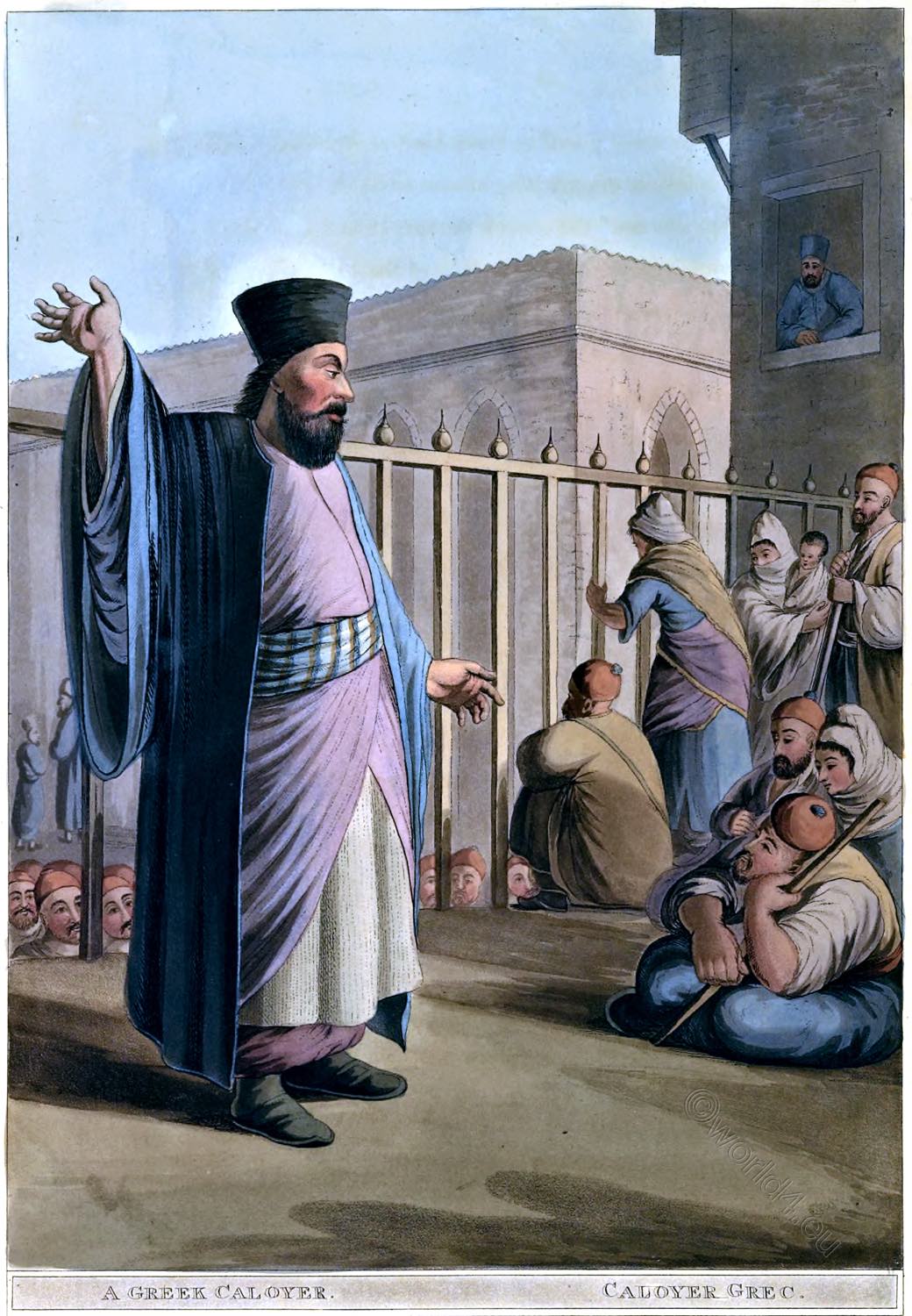
A Caloyer (plural: Calogeri, also: Calogĕri, Calogers), was a Greek monk within the Orthodox Church. The Calogeri were largely hermit monks of both sexes who lived according to the rules of Saint Basil. Apart from Mount Athos, where only Calogeri lived, there were monasteries on the islands of the Greek archipelago and on the mountain tops of Thessaly. However, they served in almost all Eastern churches, took vows similar to those of the Western religious, strictly adhered to their original order of life and to the old clothing. As far as is known, there was never any reform among them.
Within the precincts of the church the greeks and Armenians have each cloisters in which they dwell, and the greeks have a small chapel. The Franciscans have a monastery adjoining to the church, with several gardens, and a spacious chapel, dedicated to St. Catharine, out of which a flight of steps leads to the subterranean chapel of the nativity. The whole being enclosed within the same walls occupies a square space of considerable extent.
From the time of Hadrian to that of Constantino a myrtle grove witnessed the celebration of the rites of Adonis, over the spot in which Christ is reported to have been born. This grove the empress Helena cut down, and in it’s place erected a stately church, in form of a cross, dedicated to St. Mary of Bethlehem. The entrance to this is through a portico with sixteen pillars; and four rows of ten pillars, each of one piece of fine white marble, some of them beautifully speckled, adorn and support it within.
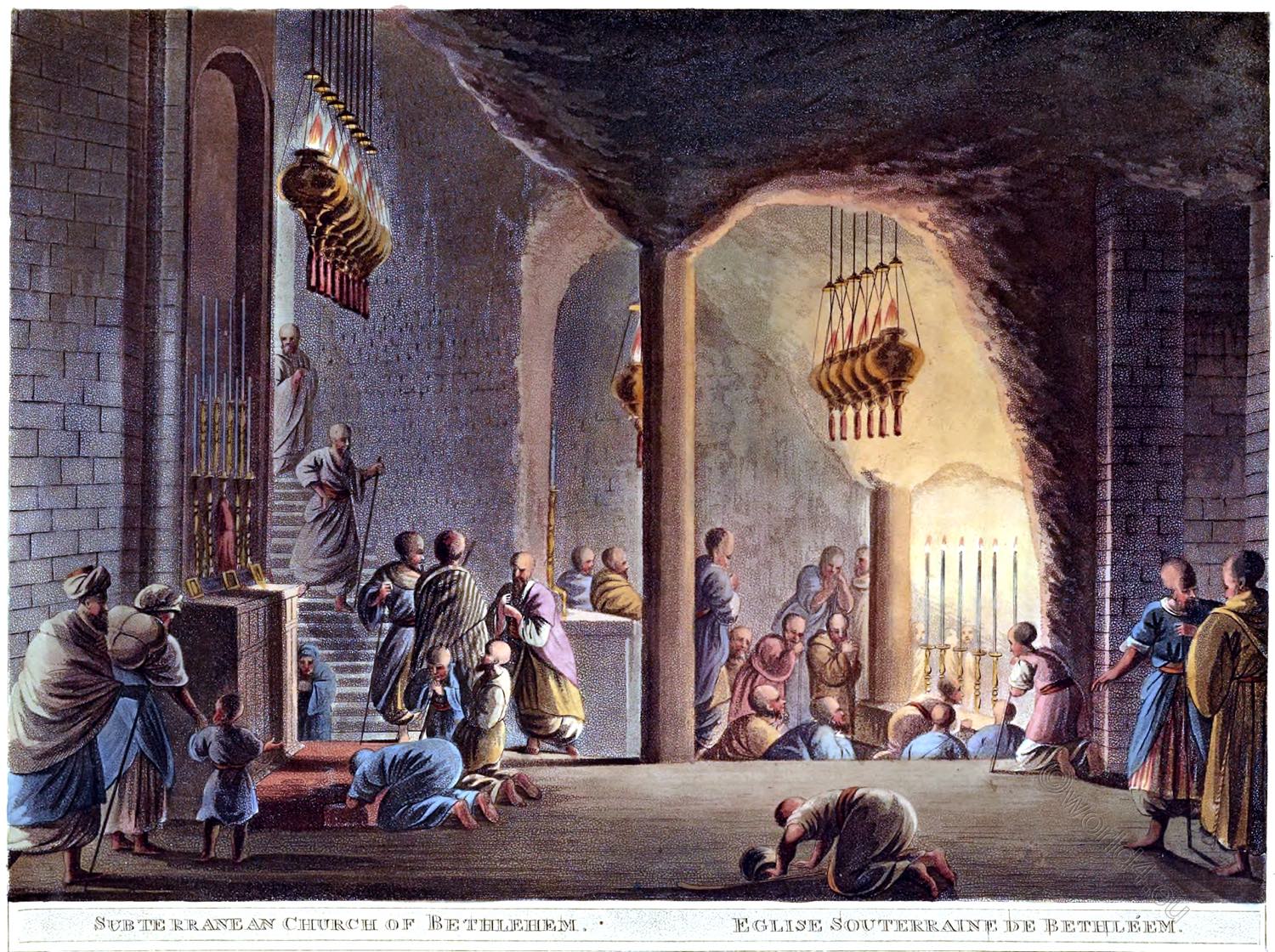
These pillars were once finely gilded. The walls are faced, nearly to the top, with large slabs of white marble, and the rest was ornamented with mosaic work. On each side of the chancel is an open worked door of brass, at the head of a flight of steps lead- ing to a subterranean vault or chapel twelve feet wide, forty feet long, and fifteen high ; the sides and floor covered with white marble, and the circular roof once embellished with gilding and mosaic, now greatly decayed.
At the upper end, between the two flights of stairs, in an arched recess stands an altar, with a picture of the nativity. On the south side, near the foot of the stairs, you descend by three steps into a smaller grot, separated from the former by three pillars of variegated marble, which support the overhanging rock.
On the west side of this is a manger, about two feet high from the floor, and a little way hollowed within, in which the infant Jesus is supposed to have been laid. This too is cased with white marble. On the opposite side of this grot is a bench in the rock, not unlike an altar, on which the wise men of the east, who were conducted hither by the star, are said to have deposited their gifts.
At the extremity of the chapel that faces the altar of the nativity is a long narrow passage, lead- ing to a square cave, supported in the centre by a pillar hewn out of the rock. At the east end of this cave, which is on the right hand as you enter it, stands an altar; and underneath this is a passage to a vault, where they say the infants slain at the command of Herod were buried.
Facing this altar is a passage, in which, on the right hand, is the tomb of Eusebius, the disciple of Jerom; and which leads to another, containing the sepulchres of St. Jerom, and that of Paula, a roman lady, descended from the ancient families of the Gracchi and Cornelii, who built four monasteries and an hospital for pilgrims near.
In this her daughter Eustochia also was probably buried. Adjoining to this grot is another, called St. Jerom’s study, in which they report he lay fifty years and six months, during which time he twice translated the Bible into latin. The altar of the circumcision stands on one side of the chancel of the church aboveground.
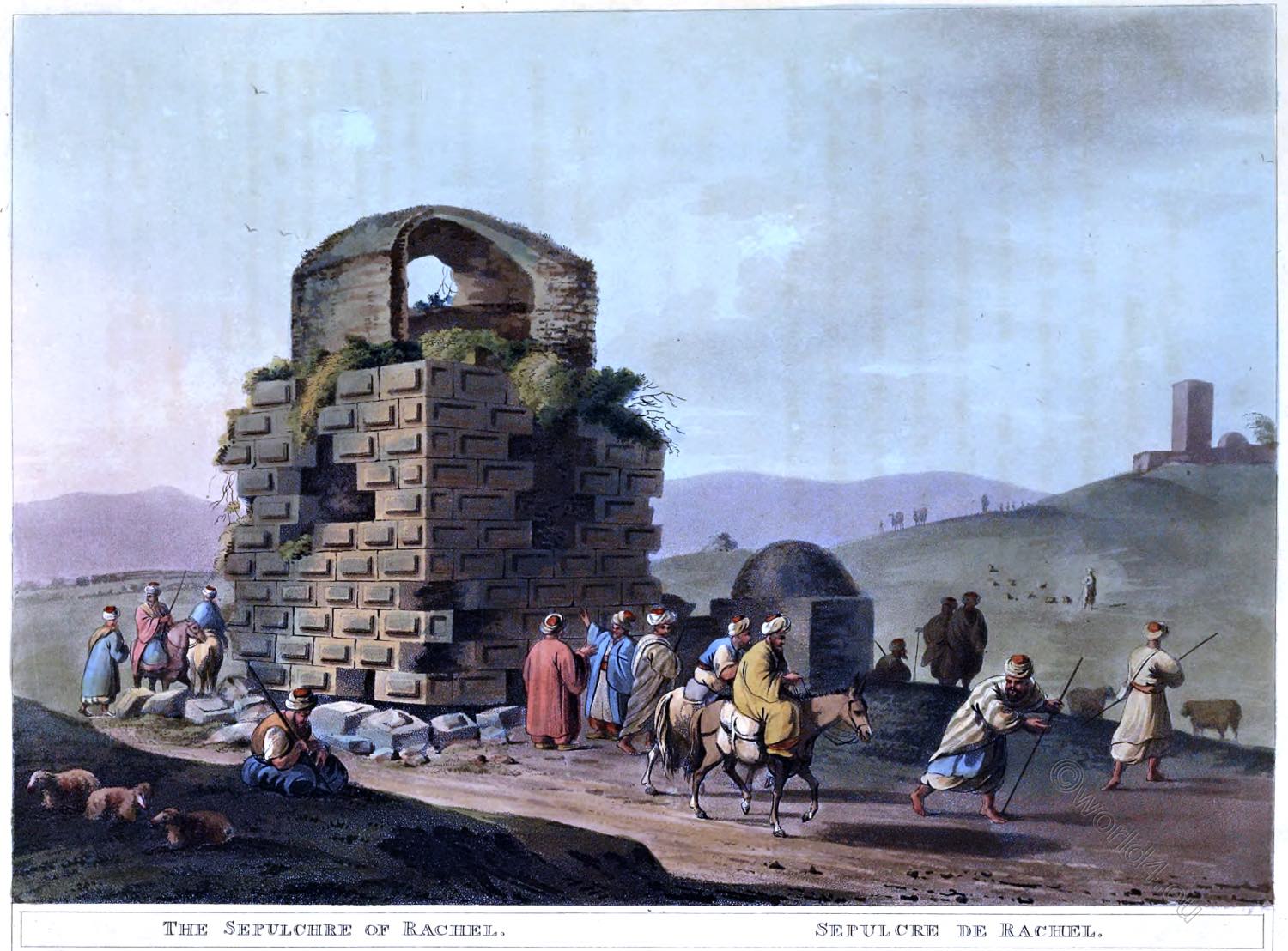
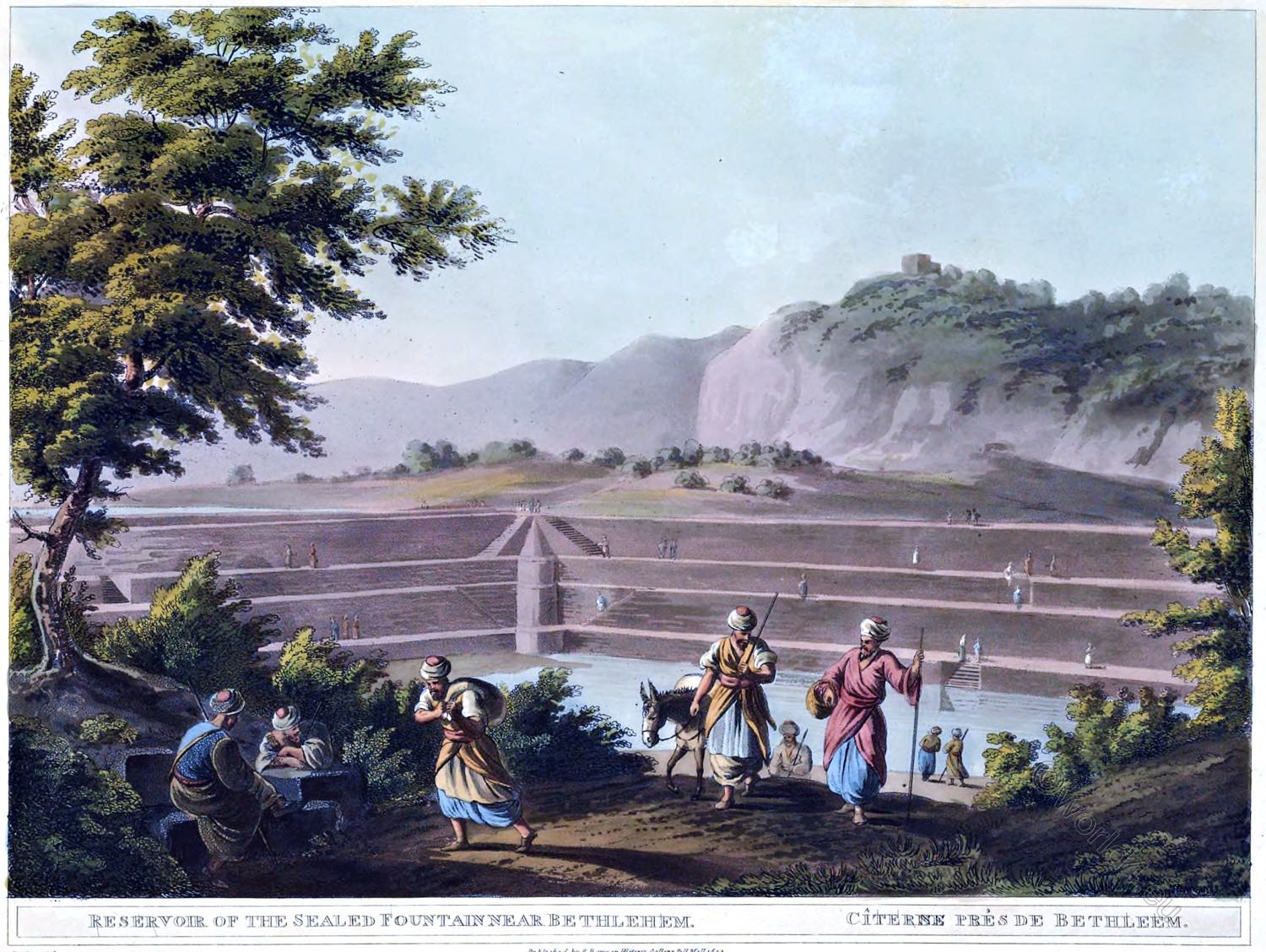
Rachel’s Tomb
On the road to this place the traveller’s attention is pointed to the tomb of Rachel; but if the bones of the favorite wife of Jacob were ever deposited here, it certainly was not in a building so similar to others of far more recent times.
In the neighborhood is shown a spacious cistern, which we may presume to be of much higher antiquity, called the reservoir of the sealed fountain. This is vulgarly ascribed to Solomon, but probably on no better foundation than an allusion in Canticles, chap. iv, ver. 12.

RAMAH.
There were several towns in Palestine of this name, which signifies a high place. One, of which a view is annexed, on the road between Jerusalem and Emmans, still retains the name of Ramata Zophim (Ramathaim-Zophim or Ramatajim), and was in all probability the birthplace of the prophet Samuel. Near it, and close to the road, are the remains of a strong and spacious edifice, apparently of the same architecture as the tower of Antonia in Jerusalem, and other ruins in different parts of this country.
Rama is also the alleged birthplace of Joseph of Arimathea, who, according to the New Testament, arranged for the burial of Jesus. Arimathea is a Greek name for Rama.

BETHLEHEM, WITH THE CHURCH OF THE NATIVITY.
by Francis Frith, 1858.
THE position of Bethlehem is so high, and the Convent of the Nativity, which forms an essential part of the general view, is so much isolated, that for some time I vainly rode round and round the town in search of a point from which I might convey, in a single picture, any comprehensive and satisfactory idea of the place.
Perhaps the one which I eventually chose is the best; it is about half a mile from the town as one descends towards Mar-Saba, and the view illustrates with remarkable accuracy the following description by Stanley. Speaking of the convent, he says : — “It is an enormous pile of building, extending along the ridge of the hill from west to east, and consisting of the Church of the Nativity, with the three convents—Latin, Greek, and Armenian—abutting respectively upon the north-eastern, south-eastern, and south-western extremities. Externally there is nothing to command attention beyond its size, the more imposing from the meanness and smallness of the village, which hangs as it were on its western skirts.”

Yet this view hardly does justice to the village, which indeed is, for Palestine, a busy and considerable town of some 2000 inhabitants, who are nearly all Christians. There is here a manufacture of pearl ornaments, and of other articles of native trade and the streets, although narrow and tortuous, are cleaner than those of most other eastern towns. The women of Bethlehem are, by consent of all travelers, very beautiful—I think I never saw so large a proportion of beauty as amongst the girls and younger women—which no doubt strikes the traveller the more forcibly, from the absence of the odious Moslem veil, to which he has probably been long accustomed. I could hardly suppress a fanciful idea that this gift of beauty to the women of the place of Christ’s Nativity was a sort of heir-loom, a lasting and delightful memento of the saintly Virgin, His mother.
The buildings on the left of my picture cover a cave containing a manger, which is shown as the actual place of the Nativity, this is in the possession of the Roman Catholics—a Greek chapel on the spot where the wise men presented their gifts—the tombs of St. Jerome and Eusebius—the cave in which the latter was employed, during the greater part of fifty years, in making his translation of the New Testament. The church above these caves was built by the Empress Helena, mother of Constantine.
Lord Nugent says, “My impression is strongly in favor of the identity of the place shown as that of the Nativity. Though there is no record of our Savior, or his mother, or Joseph, having ever revisited Bethlehem it is hard to suppose that the place where the shepherds worshipped, and the kings brought their gifts, and the first act of our redemption was made manifest, could have been forgotten or neglected by those who, from the first, had believed, or could have failed to be pointed out by them with the utmost reverence and care.”
Now, although I have nothing to say against the probability of this site, I do object, once for all, to the foregoing argument, which is frequently urged with reference to traditionary sites. I imagine that the contemporaries of these great events would be much more likely than future generations to overlook, and even disregard, the precise localities of their occurrence, being absorbed and satisfied by the events themselves. I do not suppose that the half-idolatrous interest which seized, during the middle ages, upon the “ Holy Places ” of Palestine, was awakened during the earlier, and purer, ages of Christianity : when the minds of the believers were fully and stirringly occupied by the living and persecuted spirit of the new faith.
A field is pointed out, about a mile to the east of Bethlehem, as the place where the shepherds were apprized of the birth of the Savior. Bethlehem is six miles to the south of Jerusalem, and stands at an elevation ol some 2500 feet above the sea. Its situation is truly picturesque and beautiful. It is one of the lew places in Palestine which will not disappoint the imaginative traveller. The sides of the rocky hills which surround it are covered, as of old, with terraces well cultivated, and planted with the fig and the vine.
Source:
- The Holy Land, Syria, Idumea, Arabia, Egypt, & Nubia, by David Roberts, George Croly, William Brockedon. London: Lithographed, printed and published by Day & Son, lithographers to the Queen. Cate Street, Lincoln’s Inn Fields, 1855.
- Views in Palestine, from the original drawings of Luigi Mayer: with an historical and descriptive account of the country, and its remarkable places by Luigi Mayer. London: Printed by T. Bensley for R. Bowyer, 1804.
- Egypt and Palestine by Francis Frith, 1858. Publisher: London, James S. Virtue, City Road and Ivy Lane. New York: 26, John Street.
- Voyage dans le Levant by Louis Nicolas Philippe Auguste comte de Forbin (1777-1841). Paris: De l’Imprimerie royale, 1819.
- Hilltops in Galilee by Harold Speakman (1888-1928). Publisher New York; Cincinnati: The Abingdon press, 1923.
Continuing
Discover more from World4 Costume Culture History
Subscribe to get the latest posts sent to your email.


